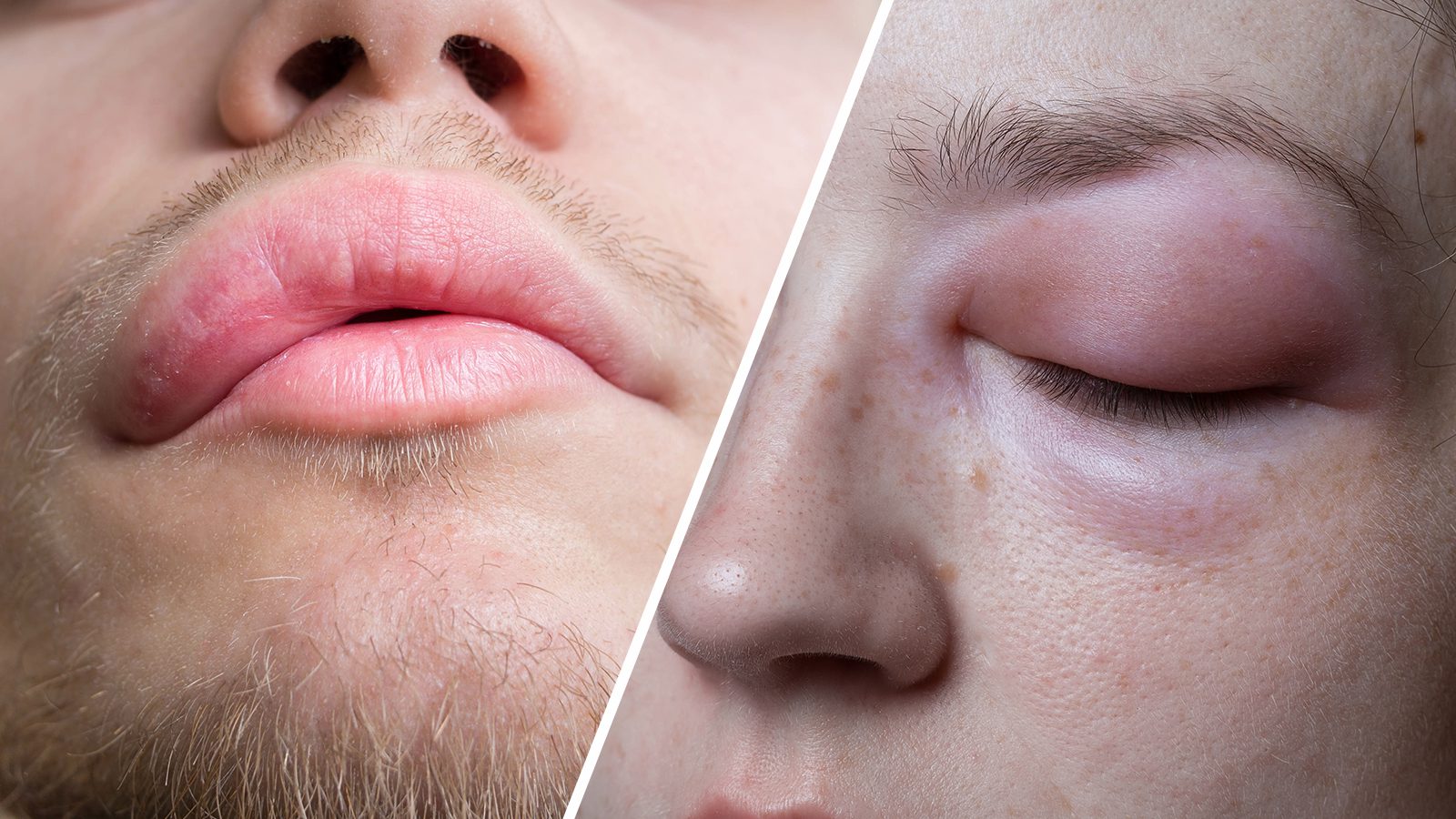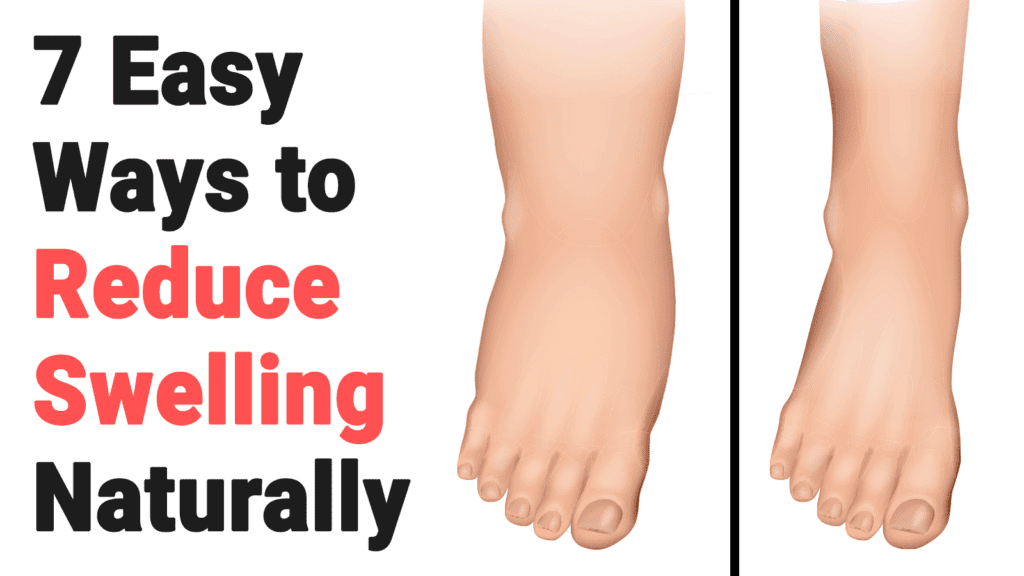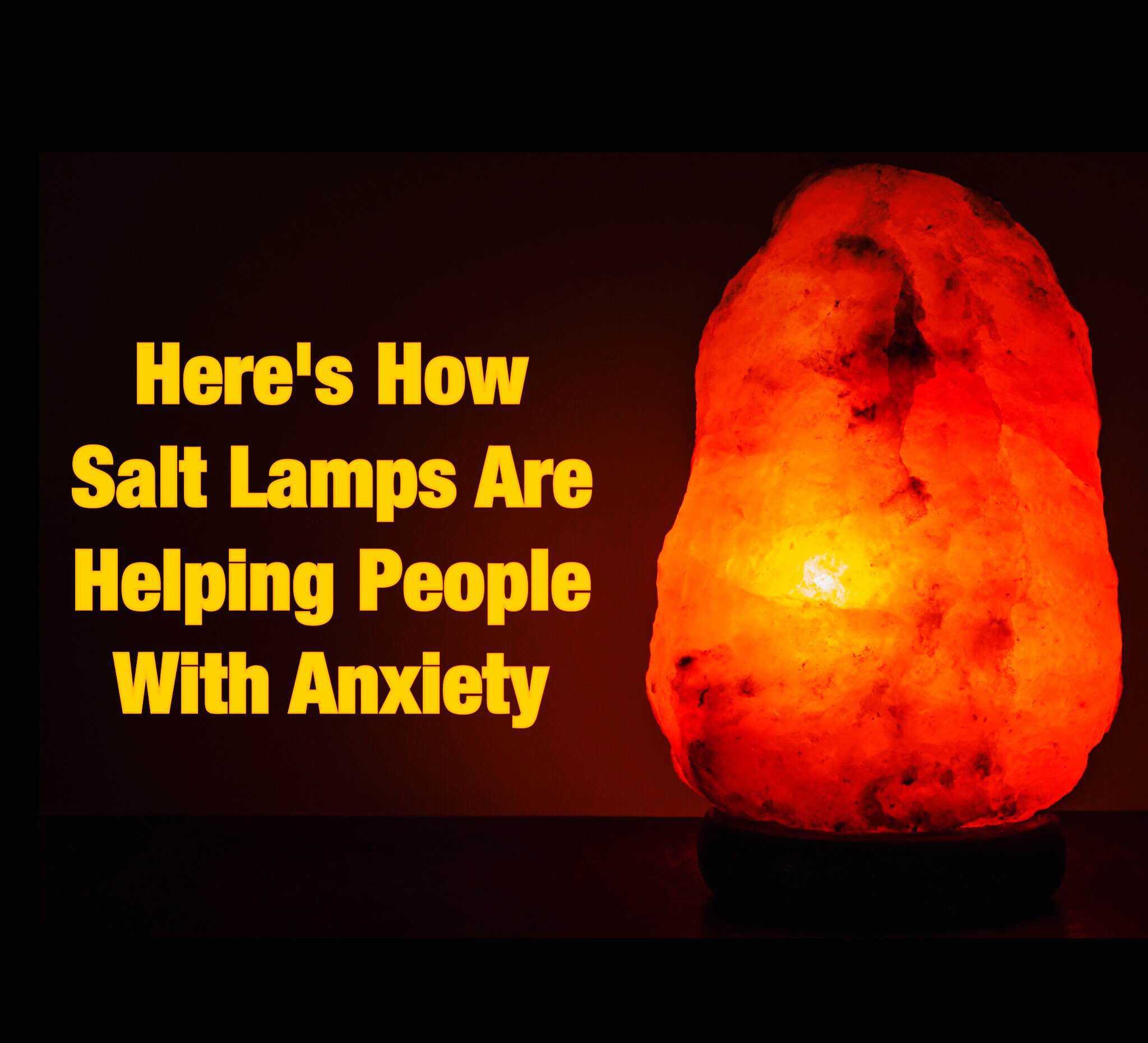What causes this swelling and redness…and how can you get relief?
Angioedema, a common condition often accompanying hives, can be as frustrating as it is mystifying. As you navigate the path to wellness, you must understand that you’re not alone—many have traversed this terrain before you. While this article offers natural remedies and lifestyle changes to manage the condition. Also know you must professional medical care if your primary symptoms (redness, swelling, itching) persist or worsen.
What Are the First Signs of Angioedema?
Recognizing the early signs of angioedema is the first step toward effective management. Each case is unique, but the four earliest symptoms include the following:
- Swelling: Swelling typically occurs in soft tissues such as the face, hands, feet, and genitals. It may also affect the lining of the throat and stomach.
- Redness: The affected areas often turn red, similar to the appearance of hives.
- Pain and Itching: The swollen areas are usually painful and often itchy. The severity of these sensations can vary significantly.
- Abdominal Cramping: Some people may experience abdominal cramping or discomfort, particularly in cases of internal swelling.
Understanding the Four Types of Angioedema
Angioedema manifests in several forms, each with its unique causes and characteristics. Understanding your specific type can help you tailor a more effective management strategy.
1 – Allergic Angioedema
As the name suggests, allergic angioedema is an immune response to a substance the body perceives as harmful—commonly called an allergen. This type is often related to common allergens such as the following:
- Certain foods (like shellfish, peanuts, and tree nuts)
- Insect bites or stings
- Latex
- Airborne allergens, including common pollen, dust, or pet dander.
Upon exposure to the allergen, the body releases histamine and other chemicals into the bloodstream, leading to swelling and other symptoms. The reaction can be immediate or occur within a few hours of exposure.
If you have allergic angioedema, avoidance of the known allergens is the primary step toward managing this condition. A dietician or allergist can guide you in creating a diet or environment that minimizes exposure to these allergens.
2 – Idiopathic Angioedema
Idiopathic angioedema is a perplexing form of the condition. The causes are unknown, making them more challenging to manage. It often lasts longer, sometimes for many months or even years. The swelling can occur spontaneously, with no discernable triggers. This type tends to be chronic and unpredictable, with symptoms coming and going without apparent reason.
Because the causes of idiopathic angioedema are unclear, a more general approach to management under a doctor’s care is necessary. Measures often involve lifestyle modifications such as stress management, dietary changes to avoid potential allergens, and other remedies to ease symptoms.
3 – Drug-Induced Angioedema
Drug-induced angioedema arises as a reaction to specific medications. Some common culprits include these
- Angiotensin-Converting Enzyme (ACE) inhibitors, used to treat hypertension
- Non-Steroidal Anti-Inflammatory Drugs (NSAIDs)
- Some antibiotics.
It’s crucial to remember that this reaction doesn’t happen to everyone taking these medications—it depends on the individual’s unique physiological response.
If you’re diagnosed with drug-induced angioedema, your healthcare professional will likely recommend an alternative medication. This diagnosis highlights the importance of open communication with your healthcare team regarding any adverse reactions you might experience while on medication.
4 – Hereditary Angioedema
Hereditary angioedema is a rare and severe condition caused by a genetic mutation. Unlike the other types, it does not come from allergies or medication. Instead, it passes down through generations in families. Those with hereditary angioedema may experience recurring episodes of severe swelling, often with no apparent trigger.
Management of hereditary angioedema primarily revolves around preventing and treating attacks when they occur. Understanding and avoiding potential triggers, such as stress or physical trauma, can help prevent attacks. It’s essential to work closely with your healthcare team to develop an appropriate management plan, which may include specific lifestyle adjustments.
How Serious Is Angioedema?
While typically not life-threatening, angioedema can be dangerous if it causes throat swelling that impedes breathing. It’s crucial to seek emergency medical help if you experience difficulty breathing.
How to Fix Angioedema Without Medicine
Remember, each person’s experience with angioedema is unique. So what works for one person may not work for another. It’s essential to communicate with your healthcare professional about any changes in your symptoms or new strategies you’re considering. And remember – always seek immediate medical help if your symptoms worsen or become severe.
While there’s no surefire cure for angioedema, several natural approaches may help manage its symptoms while the body heals.
Foods to Avoid That May Cause a Flare-Up
Certain foods are known to be common allergens, and their consumption can potentially trigger angioedema in sensitive individuals.
- Shellfish—including lobster, shrimp, crab, and certain types of fish—are among the most common food allergens. These allergies occur due to the body’s immune response to proteins found in shellfish. Ingestion can lead to a cascade of reactions, including the release of histamines that cause angioedema.
- Peanuts are another common food allergen. As with shellfish, those allergic to peanuts react to specific proteins in the nuts. The immune system treats these proteins as foreign invaders and responds with symptoms such as swelling, hives, and in severe cases, angioedema.
- Eggs, especially the egg white, contain proteins that can cause allergic reactions. The body’s immune system overreacts to these proteins, producing histamines and causing symptoms such as digestive distress, respiratory issues, swelling, skin reactions, and potentially angioedema.
Foods to Eat That May Ease the Symptoms
Certain foods have anti-inflammatory properties to help soothe inflammation and ease symptoms of angioedema.
- Fatty fish – Salmon, mackerel, and sardines are filled with omega-3 fatty acids. These compounds are famous for their potent anti-inflammatory effects. Regularly consuming fatty fish can help reduce overall inflammation and potentially alleviate the swelling and discomfort associated with angioedema.
- Berries, including blueberries, strawberries, and raspberries, are packed with antioxidants and flavonoids known for their inflammation-fighting properties. These compounds can help reduce swelling and provide relief from symptoms.
- Green leafy vegetables, including spinach, kale, and Swiss chard, are high in vitamins, minerals, and other nutrients that can help reduce inflammation. These include Vitamin E and other antioxidants that help protect the body against inflammatory molecules called free radicals.
Vitamin D and Angioedema
One small study suggests that vitamin D may help manage autoimmune conditions, including angioedema. While this study is small, Vitamin D may be worth a try – mention it to your doctor.
Fatty fish and fortified foods are good dietary sources. While sunshine is typically the best source of Vitamin D, it’s worth mentioning that overexposure to ultraviolet rays may worsen the symptoms. Thus, Vitamin D supplementation is a great option.
Drink Plenty of Water
Staying well-hydrated is a fundamental part of maintaining good health, and it can play a crucial role in managing conditions like angioedema. Water aids in the properly functioning of every system in our bodies, including our immune system. In the case of angioedema, hydration can assist in flushing allergens out of your body, thus minimizing the potential triggers of an allergic response.
Moreover, water aids in maintaining the health of your skin, keeping it resilient and less susceptible to irritations that could potentially exacerbate angioedema symptoms. Drink at least 8-10 cups of water daily, though this may vary based on individual needs, activity level, and climate.
Cold Compresses
A cold compress can provide quick relief when dealing with the swelling and discomfort associated with angioedema. The cool temperature helps to constrict the blood vessels in the area, which reduces swelling and numbs the skin, leading to temporary relief from itching and pain.
To use this natural remedy for angioedema:
- Wrap an ice pack in a clean, soft cloth and apply it to the swollen area for 10-15 minutes.
- Repeat this several times a day as needed.
- Remember to avoid applying ice directly on your skin to prevent frostbite.
Wear Loosely Fit Clothing
Wearing tight clothing can aggravate symptoms of angioedema, especially when swelling is present. Tight clothes can exert pressure on sensitive, swollen areas, increasing discomfort. They can also cause friction and warmth, enhancing inflammation and itching.
To stay comfortable, opt for clothes made of loose, breathable fabrics. Such clothing minimizes pressure on swollen areas and helps keep the skin cool, reducing sweating and the risk of further irritation.
Take a Cool Baking Soda Bath
Baking soda, a common household ingredient, can be an effective natural remedy for the itching and inflammation associated with angioedema. Baking soda baths are known to soothe irritated skin due to their anti-inflammatory properties. The alkalinity of baking soda helps neutralize skin acidity and soothe irritation.
Add one to two cups of baking soda to a bathtub filled with cool water to prepare a baking soda bath. Stir the water well until the baking soda dissolves and evenly distributes, then soak in the tub for 15-20 minutes.
After you finish bathing, gently pat your skin dry with a fresh towel. This soothing remedy can be used once daily or as needed to alleviate symptoms.
Stress Management
Stress is a known trigger for many inflammatory conditions, including angioedema. Chronic stress can disrupt the body’s hormonal balance and immune response. Thus, it can potentially lead to increased inflammation and swelling. Incorporating stress management techniques such as yoga, meditation, deep breathing exercises, and mindfulness practices into your routine can help mitigate stress. As a result, you potentially decrease the frequency or severity of angioedema attacks.
Regular Exercise
While it’s important to avoid strenuous activity during a flare-up, regular exercise can help to manage this condition in the long term. Exercise can reduce inflammation, boost your immune system, and help manage stress. Stay well-hydrated and dressed in breathable clothing during exercise to prevent overheating, which could potentially trigger angioedema.
Try Turmeric
Turmeric, rich in curcumin, is a potent anti-inflammatory and antioxidant. It may also ease the swelling and itching of this condition. Before starting any new supplement or herbal remedy, always discuss it with a healthcare professional or pharmacist to ensure it doesn’t interfere with other protocols.
Avoidance of Environmental Allergens
Remember that for some people, angioedema comes from environmental allergens such as pollen, dust mites, or pet dander. Keeping your home clean, using air purifiers, and avoiding outdoor activities when pollen counts are high may help reduce exposure to these allergens. As a result, you will lessen the chance of an angioedema attack.
Final Thoughts on Gaining a Better Understanding of Angioedema
Living with angioedema can be challenging, filled with unexpected flare-ups and discomfort. But, with a clear understanding of its early signs, various types, and possible triggers, you can confidently navigate this journey. Knowledge is power. And in this case, it is your first line of defense against the swelling and pain. By recognizing the first signs of an attack, understanding the different types and their implications, and being aware of the food and lifestyle factors that can impact your symptoms, you equip yourself with the tools to manage this condition effectively.
However, remember that this self-management should always be coupled with professional medical guidance. Each individual’s experience with angioedema is unique, and therefore, professional medical advice is paramount to creating a personalized plan to manage your symptoms. Contact your primary care physician regarding your concerns, and don’t hesitate to seek immediate care if your symptoms intensify or become unmanageable.
In this journey, being patient and kind to yourself is crucial. Managing angioedema can be stressful, and it’s important to remember that having good and bad days is okay. Stay proactive, maintain an open dialogue with your healthcare provider, and continue to educate yourself about your condition. By doing so, you will manage angioedema more effectively and maintain a high quality of life. Remember, your condition does not define you—you have the power to define your journey with angioedema.



















